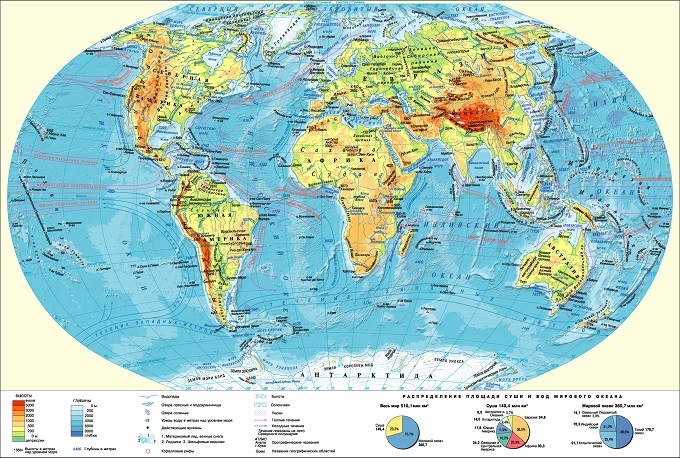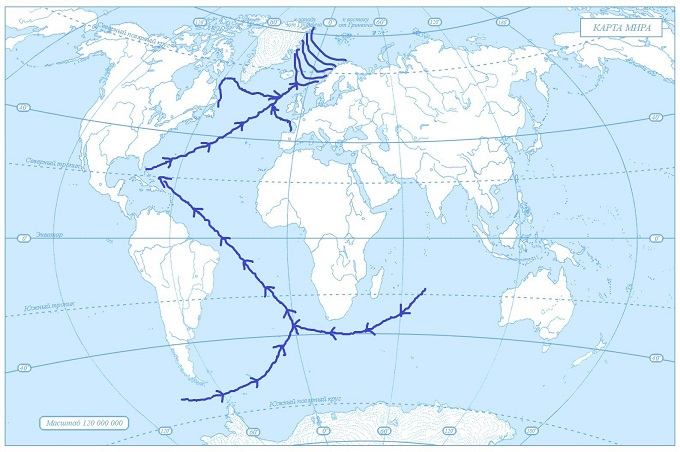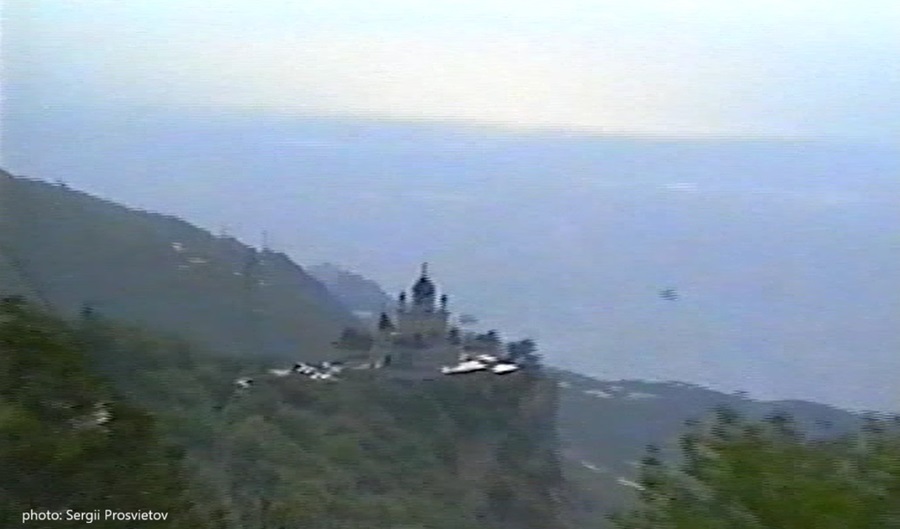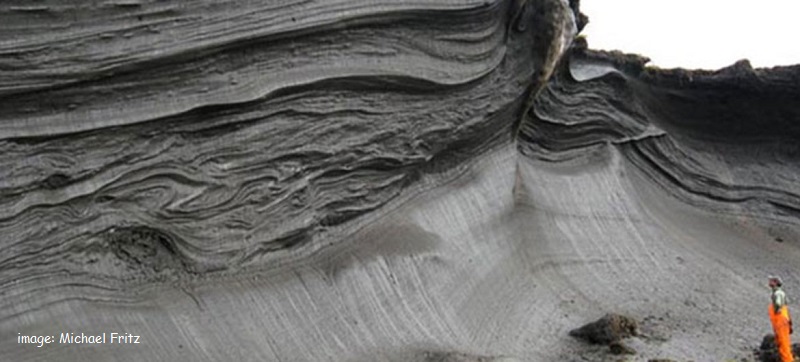
Memory of water
Ocean currents are giant rivers of water flowing among ocean waters
2019-10-24 19:01
The width of such a river can reach 100 kilometers, its length up to 10 thousand kilometers, depth up to one and a half kilometers, and the speed of the sea current up to 10 kilometers per hour. But what drives such masses of water? And most importantly - what got them moving?
How ocean currents arose
Ocean currents are another important evidence of glacial emissions from the Arctic Ocean and at the same time a powerful driving force for climate change throughout the Earth.
I will not delve into the current scientific views that giant masses of water are moving in the oceans due to wind blows or differences in water density. Undoubtedly, winds have some influence on the life of ocean currents, but there is no such wind that could once move this gigantic mass of water from its place and maintain its course for thousands of years in a given direction.
Complex explanations should not be sought where simple explanations exist.

Let's get back better to the ice tsunami already known to us from the Arctic Ocean.
With each such large-scale release of ice onto land, a huge water hole appeared in the ocean. The study of underwater permafrost in the Arctic Ocean - it turns out there is also underwater permafrost - gives information that during the ice ages the level of the Arctic Ocean decreased by about 100 meters.
These data perfectly support my hypothesis about the dangers stored in oceanic ice.
So, with every release of floating ice to land, the water level in the Arctic Ocean could drop dramatically by about 100 meters.
At this moment, according to the law of communicating vessels, the waters of the Atlantic Ocean poured into the Arctic Ocean through the widest strait connecting them - between Greenland and Europe. The subsequent lowering of the water level in the Atlantic "pulled" the waters of the Indian and Pacific Oceans.

It happened! The Gulf Stream was born and the waters of the oceans set in motion.
But the formation of a modern map of ocean currents occurred in two stages. The first stage - from the occurrence of level differences in the Arctic Ocean and in the remaining oceans of the Earth, and to their alignment.
At this stage, water flowed into the Arctic Ocean, and the levels of the other oceans decreased slightly. At some point, meltwater from glaciers thrown onto land was included in this process.
After the levels of all the oceans were equal, the second stage of the formation of ocean currents began.
At this stage, reverse flows began to form. Since the Arctic Ocean did not accept Atlantic water anymore, and the gigantic inertia of the current masses of water throughout the oceans continues to operate, the heavy chilled waters in the northern part of the Norwegian current began to turn in the opposite direction, moving at great depths.
Gradually, similar dynamics were transmitted to other currents that feed the Gulf Stream. Thus, the map of ocean currents was formed that we observe today, with some corrections made by the prevailing winds, seasonal variations in temperature and density of ocean waters.
And the Earth experienced such a two-stage cycle of redistribution of ocean waters after each ice disaster on the shores of the Arctic Ocean.
Ice ages
With every Arctic ice catastrophe, our planet was almost instantly plunged into cold.
For several hours, thousands of square kilometers of land were covered with ocean ice. Then the waters of the Atlantic came into motion, taking the warm waters of the Caribbean to the north to cool them there to the temperatures of the polar water. And streams of cold water from Antarctica poured into the once hot central Atlantic, dragging along the water of the Indian and Pacific Oceans.
These catastrophic climate changes all over the planet took place in just a few tens of days. Nothing living on Earth had time either to adapt to a cold snap, or to migrate to warmer climes. It should be borne in mind that dinosaurs were cold-blooded creatures. One frosty night was enough for their complete extinction. And this fateful night, apparently, once came.
However, we recall that the gigantic Gulf Stream was caused by the level difference in the Atlantic and the Arctic Ocean, which arose due to the release of a considerable mass of ocean ice and water from the Arctic Ocean onto the mainland. Since the moment when the levels of the oceans have become equal, the driving force of the Gulf Stream has dried up. Today, the inertia of the Atlantic is driven only by the inertia of a large mass of the water flowing in them.
When the Gulf Stream disappears
Over time, this inertia will dry up and the once-full-flowing Gulf Stream will become poorer. The same fate awaits the offspring of the Gulf Stream - the currents that ensured the flow of Indian and Pacific oceans into the Atlantic.
But ocean currents carried not only water and garbage. For tens of millennia, they have served as powerful channels for the transfer of thermal energy. And the function of the Gulf Stream in this process is unique, since it is the only powerful current on Earth that moves waters in the meridian direction from the South Atlantic to the North and further to the very borders of the Arctic.
The meridian currents of the Atlantic perform the most important function of mitigating climate throughout the Atlantic basin and in the adjacent mainland territories. The cold waters of the South Atlantic bring comfort to the equatorial regions of Africa and South America. And the Gulf Stream, turning into the Norwegian course, provides a mild climate not only in the countries of Scandinavia, but also throughout Europe.
And now imagine that the inevitable happened, and the meridian currents of the Atlantic became impoverished. The planetary air conditioner has ceased to function and climatic conditions are developing in the world according to latitudinal laws. In the northern latitudes of Europe and America, it becomes colder and the climate of Norway will become as severe as the weather in the Subpolar Urals, and the climate of Spain will become similar to the climate in the Kyzylkum desert.
On the whole, on the globe, the climate will become more contrast: hotter at the equator and more severe in the polar latitudes. But due to the thawing of the acquired permafrost rocks of the northern hemisphere, the average annual temperatures on the planet will increase and severe weather conditions will develop in equatorial latitudes, but on the shores of the Arctic Ocean a climate will become quite suitable for dinosaurs to live. And they will try to return here.
Afterword
Of course, gigantic greenhouse gas emissions will occur due to the decomposition of permafrost-bound biomass, ice will melt at both poles of the Earth, the sea level will rise, but only the anthropogenic factor plays a negligible role in these processes. The whole power supply of mankind does not deserve attention in comparison with the energy of the Sun, permafrost and ocean currents.
Humanity just needs to prepare for the climate that will inevitably come. If unknown forces do not again throw the Arctic ice onto any of the shores of the Arctic Ocean.
Каждый ваш вклад имеет большое значение. Поддержите независимые научные исследования автора и помогите более глубоко изучать важные темы сегодняшнего дня
Пополнить банку на независимые научные исследования
Author: Sergii Prosvietov
Просмотров всего: 63100 Просмотров сегодня: 13

Why did the Soviet Union collapse?

Ice and flame